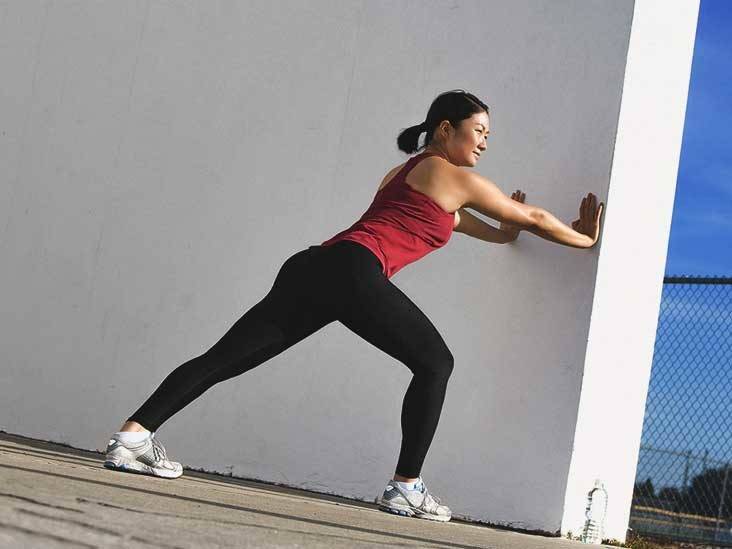Do you spend a lot of time sitting at a desk? Do your feet and shins feel tight and cramped by the end of the day? If so, you need to start doing the standing shin stretch! This simple stretch can help relieve tension in your feet and shins, and it can be done right at your desk. In this blog post, we will discuss the benefits of the standing shin stretch and show you how to do it properly.
Contents
What Is Standing Shin Stretch?
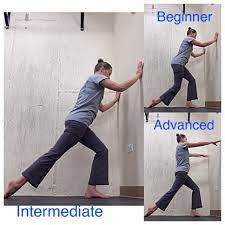
The shin stretch is a simple yet effective stretch for the shins. It involves placing your hands on your hips and standing on one leg, with the other leg extended out in front of you. You then lean forward, keeping your back straight, until you feel a stretch in the shin of the extended leg.
- To perform the standing shin stretch, stand with your feet about hip-width apart and place your hands on a wall or other support for balance.
- Place your left foot behind your right foot, keeping your heel on the ground. Keeping your back straight, lean forward into your right leg until you feel a stretch in your left calf muscle.
- Hold this stretch for 30 seconds and repeat 2-3 times. You can also perform this stretch with both feet behind your right leg for a deeper stretch.
The standing shin stretch is an excellent way to improve flexibility in the calf muscles and relieve Achilles tendon pain. If you have any questions or concerns, please consult with a qualified healthcare professional before starting this or any other stretching program.
This stretch is often used by runners and other athletes to help prevent shin splints, as it helps to stretch and lengthen the muscles and tendons around the shin. It can also be used as a general calf muscle stretch.
Is Stretching Good For Standing Shin Splints?
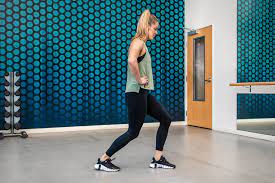
Yes, stretching can be beneficial for shin splints. Shin splints are a common injury that can cause pain in the lower legs. While they can be caused by different things, such as overuse or improper footwear, one of the main causes of shin splints is tight muscles in the lower leg. Stretching can help to loosen these muscles and prevent shin splints from occurring.
In addition to helping with shin splints, stretching can also improve your overall flexibility. This can help you avoid other injuries, such as strains and pulled muscles. Stretching can also help increase your range of motion, making it easier to perform activities that require flexibility, such as yoga or Pilates.
To get the most benefit from stretching, it is important to stretch regularly. For shin splints, aim to stretch at least once a day. If you are new to stretching, start slowly and gradually increase the frequency and intensity of your stretches over time.
7 Stretches For Shin Splint
There are various standing stretches for shin splints. They are as follows:
Gastrocnemius stretch
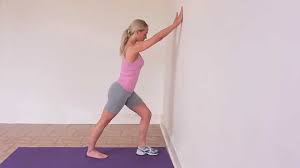
The first stretch is the gastrocnemius stretch. This involves standing with your feet together and your hands on your hips. You then need to bend your right knee and bring your left heel up towards your buttocks. Remain in this position for 30 seconds before repeating with the other leg.
Soleus stretch
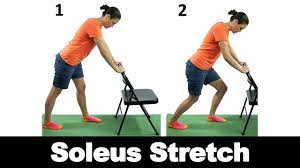
The second stretch is the soleus stretch. This involves standing with your feet together and your hands on your hips. You then need to bend your right knee and bring your left heel up towards your buttocks. Remain in this position for 30 seconds before repeating with the other leg.
Plantar Fascia stretch
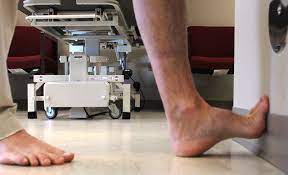
The third stretch is the plantar fascia stretch. This involves standing with your feet together and your hands on your hips. You then need to bend your right knee and bring your left heel up towards your buttocks. Remain in this position for 30 seconds before repeating with the other leg.
Tibialis Anterior Stretch
The fourth stretch is the tibialis anterior stretch. This involves standing with your feet together and your hands on your hips. You then need to bend your right knee and bring your left heel up towards your buttocks. Remain in this position for 30 seconds before repeating with the other leg.
These are all great stretches for a shin splint. However, if you find that these do not work for you, there are many others that can be found online or in books. Experiment until you find the ones that work best for you.
Achilles Tendon Standing Stretch
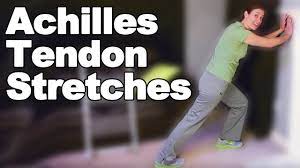
One of the most common requests we get at our clinic is for stretches to improve flexibility in the calf muscles. The calf muscles, specifically the gastrocnemius, can often become very tight from overuse, especially in activities that involve a lot of running or jumping. This can lead to pain in the Achilles tendon and heel region. The standing shin stretch is an excellent stretch to help improve flexibility in the calf muscles and relieve Achilles tendon pain.
Strengthening Gastrosoleus muscle
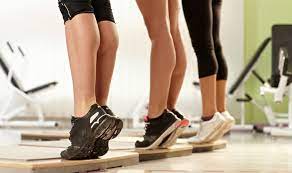
The exercise which helps in strengthening the gastrosoleus muscle is standing shin stretch. It is mainly used for calves muscle. This exercise is very simple and easy to do.
- You just have to stand on a step with your heels hanging off the edge, then lower your heels as far down as possible.
- You should feel a stretch in your shins and calves.
- Hold this position for 10-15 seconds, then raise your heels back up to the starting position. Repeat this exercise 10-15 times.
Standing shin stretch not only strengthens the gastrosoleus muscle but also improves flexibility in the shins and calves. This can help prevent injuries, such as shin splints. Shin splints are a common running injury that is caused by overuse or repetitive stress on the shinbone and surrounding muscles. The pain is usually felt along the inside of the shin, where the Gastrosoleus muscle attaches to the bone. Shin splints can be extremely painful and may even require you to take a break from running or other activities that put stress on your shins.
So, if you are looking for an exercise to help prevent shin splints or other calf injuries, try the standing shin stretch. Not only will it help strengthen your Gastrosoleus muscle, but it will also improve flexibility in your shins and calves.
Strengthening The Anterior Tibialis
The exercise used in strengthening the Anterior Tibialis are as follows:
- While standing, place a band around your foot and hold the other end with your hand.
- Keeping your heel on the ground, raise your toes toward your shin. Be sure to keep your knee straight.
- Return to the starting position and repeat.
- Do 2-3 sets of 15-20 repetitions.
The anterior tibialis is the muscle located on the front of your lower leg. It is responsible for lifting your foot and toes upward, and also assists in keeping your ankle stable. This muscle is often weak in individuals who have flat feet or low arches. Strengthening it can help to improve your balance and prevent injuries.
The standing shin stretch is an effective way to strengthen your anterior tibialis. By keeping your heel on the ground and raising your toes toward your shin, you are working against resistance to lift your foot. This exercise can be done with or without a band, but using a band will provide additional resistance and make the exercise more challenging.
What Are The Prevention Tips For Shin Stretch?
The prevention tips For standing stretch are as follows:
- Wear comfortable shoes that have enough support and cushioning.
- Avoid high heels.
- Take breaks often if you are on your feet for long periods of time.
- Elevate your feet when you can.
- Do not cross your legs for long periods of time.
- Do calf raises throughout the day to keep the muscles strong and limber.
If you are experiencing pain in your shins, it is important to seek treatment from a medical professional. They can help you determine the cause of the pain and provide you with the best course of treatment. With their help, you can find relief from your shin pain and get back to your life quickly and safely.
Conclusion
It may be concluded that standing shin stretch is an effective way to improve flexibility and range of motion in the lower legs. Additionally, it can help to prevent injuries, and relieve pain associated with conditions such as shin splints. For these reasons, the standing shin stretch is a valuable addition to any stretching routine.
Physical Therapy help patients recover from pain. If you’re experiencing Back pain, Shoulder pain, Knee pain, Neck pain, Elbow pain, Hip pain, or Arthritis pain, a physical therapist at MantraCare can help: Book a physiotherapy session
